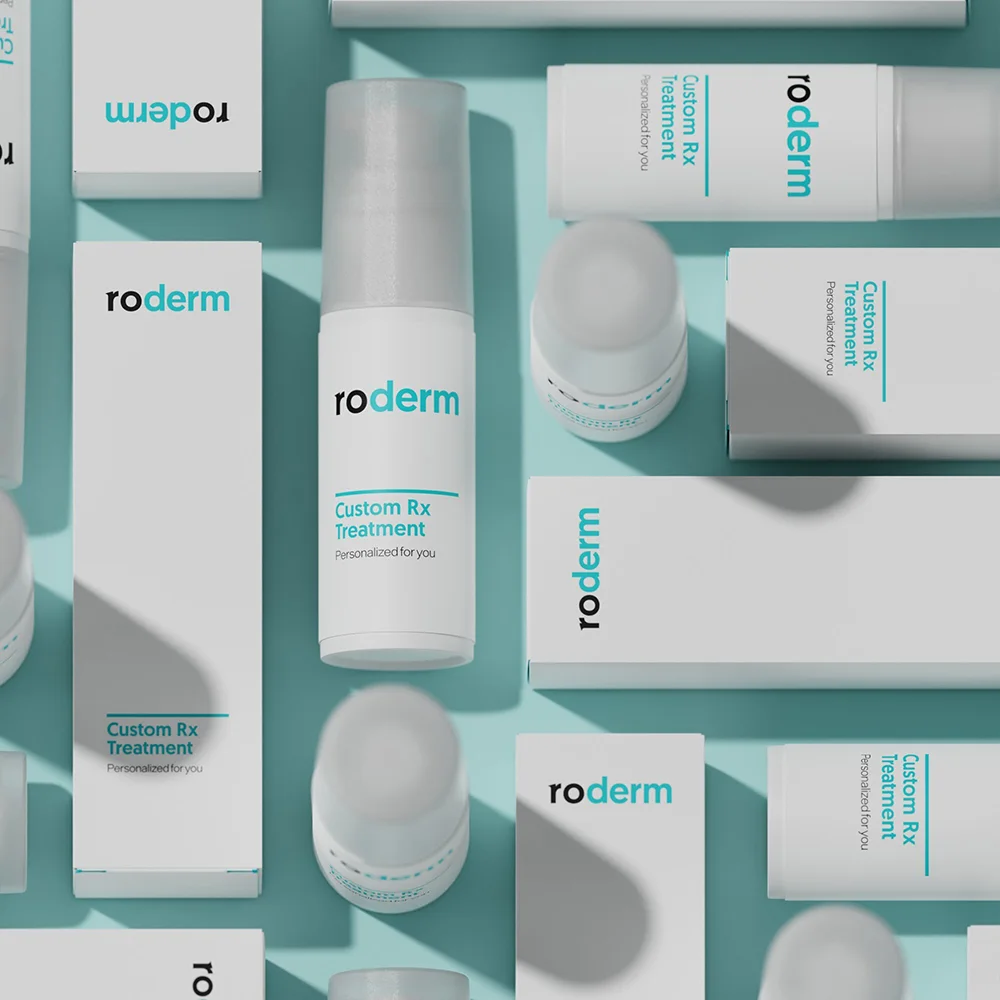What is eczema? The causes, symptoms, and treatments explained

Reviewed by Mike Bohl, MD, MPH, ALM,
Written by Chimene Richa, MD
last updated: Feb 06, 2020
9 min read
Here's what we'll cover
According to the American Academy of Dermatology (AAD), eczema can mean either a family of skin diseases that causes irritated, inflamed skin OR any one of the conditions within this family, including (AAD, n.d):
Atopic dermatitis
Contact dermatitis
Dyshidrotic eczema
Neurodermatitis
Nummular eczema
Stasis dermatitis
Eczema is more common in children and teenagers, but it can also affect adults. Each form of eczema has its own symptoms and triggers. However, all types seem to have redness, dry skin, and itching of various intensities. Approximately 10.1% (over 31 million people) in the U.S. have some form of eczema; it can affect people of all skin colors. In other words, over the course of their lives, one in ten Americans will experience some type of eczema (Silverberg, 2013).
Types of eczema
Atopic dermatitis
Atopic dermatitis (AD), commonly called eczema, is the most common type of eczema. It occurs most often in children; 90% of cases occur before five years of age and can happen as early as during the first year of life (AAD, n.d.). The most common symptoms include dry, scaly, and itchy patches of skin, especially on the cheeks, scalp, forehead, and other parts of the face. Sometimes the skin forms blisters that can then ooze and weep. Older children and teenagers who develop atopic dermatitis may notice the rashes more in the creases of elbows or knees, neck, wrists, ankles, and/or crease between the buttocks and legs. You may notice your child rubbing their face on the bedding because of the itching; for some children, the itching can be so bad that they have difficulty sleeping. Studies show that adults can also develop AD, with up to 25% of adult cases thought to be new-onset AD (Lee, 2019). It should be noted that approximately 50% of children with AD have continued symptoms as adults (AAD, n.d.). Adult atopic dermatitis tends to involve much of the body, especially the head and neck area. Also, the AD rash in adults is darker, and the skin is very dry, very scaly, and very itchy—more so than in infants and young children (AAD, n.d.).
There are several risk factors for atopic dermatitis. The strongest risk factor is family history; if a child has an immediate family member with atopic dermatitis, then they are at higher risk of getting atopic dermatitis themselves (AAD, n.d.). If the parents have hay fever or asthma, then the child is also more likely to get atopic dermatitis. Atopic dermatitis is closely linked to other allergic (atopic) disorders like food allergies, allergic rhinitis (hay fever), and asthma, and people with atopic dermatitis are at higher risk for getting these other allergic conditions (Paller, 2019). Atopic dermatitis is not contagious, and it is not caused by certain foods (AAD, n.d.). Food allergies and atopic dermatitis often occur together, but one does not cause the other. However, living in a developed country, being female, and belonging to a higher social class are all risk factors for having atopic dermatitis. A child is also more likely to get this condition if he or she was born to a mother later in her childbearing years (AAD, n.d.). Specific triggers, while not actual causes of atopic dermatitis, can make atopic dermatitis worse. These include:
Environmental antigens like pollen, mold, dust mites, etc.
Cold, dry air
Contact with irritating chemicals or dyes from soaps, lotions, etc.
Contact with rough fabrics like wool
As mentioned earlier, atopic dermatitis does have a strong relationship with asthma, food allergies, and hay fever. The National Institute of Allergy and Infectious Diseases (NIAID) estimates that approximately 30% of children with AD will go on to develop food allergies, asthma, or hay fever (NIAID, 2016). Atopic march describes the progression in which a person starts with atopic dermatitis in infancy and then develops food allergies, hay fever, and/or asthma in childhood or later on in life (Zheng, 2014). Several theories aim to explain why atopic dermatitis is associated with the atopic march. One is that people with atopic dermatitis have an overactive allergic immune response (Paller, 2019). Another is that atopic dermatitis makes the skin a less effective barrier against allergens, allowing them access to the body’s immune system and the development of the other conditions (Zheng, 2014). Lastly, genetics likely plays a role; family history is one of the strongest risk factors for not only atopic dermatitis, but also the triad of AD, hay fever, and asthma (Paller, 2019).
If it sounds complicated, it is—no one really knows what causes atopic dermatitis. Most likely, multiple factors like your genes, your environment, and how your immune system works all play a role.
Contact dermatitis
Almost everyone has gotten a rash from poison ivy, jewelry, make-up, or some other compound that touched your skin. This rash is an allergic skin reaction or allergic contact dermatitis; it can occur rapidly after exposure or take longer to develop (AAD, N.d.). Some of the most common causes of allergic contact dermatitis are poison ivy, nickel, make-up, jewelry, or latex gloves. Sometimes people develop allergic contact dermatitis to things that never bothered them before (i.e., jewelry they have worn for years). Symptoms may include:
Intensely itchy skin
Red, swollen rash
Hives (itchy welts on the skin)
Burning, stinging sensation
Blisters
Scaly skin
Another type of contact dermatitis is irritant contact dermatitis; this comes from something irritating the skin, but it is not an allergic reaction. Diaper rashes, dry or chapped hands from repeated washing, exposure to harsh chemicals, and chapped lips from repeated licking are all examples of irritant contact dermatitis (AAD, n.d.).
Dyshidrotic eczema
Dyshidrotic eczema (also called pompholyx, vesicular eczema, and vesicular dermatitis among other names) is a skin condition where you get dry, itchy skin along with small, deep blisters on the palms of your hands, soles of your feet, or both (AAD, n.d.). The blisters are often itchy and painful; in severe cases, they can make it difficult to walk or perform simple tasks like washing dishes. Although they usually clear within two to three weeks, your skin can still be dry and cracked (AAD, n.d.). Dyshidrotic eczema tends to flare up when you are under stress, in warmer temperatures, or if your hands/feet stay wet for an extended time (AAD, n.d.). While the cause of this skin condition is unknown, risk factors that increase your chance of developing dyshidrotic eczema include (Wollina, 2010):
Atopic dermatitis (in you or a family member)
Allergic contact dermatitis (especially to nickel)
Family members with dyshidrotic eczema
Hay fever (in you or a family member)
Sweaty hands or feet (hyperhidrosis)
Certain occupations also put you at risk for developing this skin condition. People who work with cement have a higher chance of developing dyshidrotic eczema. Also, people who work with chromium, cobalt, or nickel are at an increased risk. Lastly, occupations that require workers’ hands in water frequently throughout the day, such as healthcare workers, hairstylists, and florists, also increase the likelihood of getting this condition (AAD, n.d.).
While there is no cure for dyshidrotic eczema, you should treat the flare-ups and decrease your risk whenever possible. See your dermatologist (skin specialist) for the appropriate diagnosis and treatment because having dyshidrotic eczema increases your risk of developing skin infections.
Neurodermatitis
Neurodermatitis begins with an itchy patch of skin that you can’t stop scratching; the scratching makes the itching worse, and you get into an itch-scratch cycle. Another name for this condition is lichen simplex chronicus. Typically, there are only one or two itchy patches. Some people notice that the itching is worse when they are relaxed or trying to go to sleep; stress is another factor that can trigger the itching. As you keep scratching, you can cause tiny wounds that scab over, and eventually, the skin gets thick and leathery. Other symptoms may occur with the itching like pain, hair loss (in the scalp), and an open sore that bleeds or oozes. Some people notice that the itchy patch becomes raised, rough, and red- to violet-colored.
Neurodermatitis occurs more often in women between 30–50 years of age. You may be at an increased risk of developing neurodermatitis if you have atopic dermatitis, contact dermatitis, psoriasis, or an anxiety disorder. While the actual cause is not known, there are several triggers for neurodermatitis, such as (AAD, n.d.):
Nerve injury
Emotional stress or anxiety
Insect bite
Tight-fitting clothes, especially those made from wool or synthetic fabrics (polyester)
Dry skin
Traffic exhaust or other air pollutants
Allergens like molds, pollens, etc.
Sweating
Nummular dermatitis
Nummular means “coin-shaped” in Latin, and, as the name implies, people with nummular eczema get round or oval patches of red, itching (or sometimes burning) skin. Other names for this condition include nummular eczema and discoid eczema. Often these patches appear in areas of prior skin injury, like burns, scrapes, scratches, etc. Nummular dermatitis patches can range from smaller than one inch to larger than four inches and appear most often on the legs; they can also form on arms, torso, hands, and feet (AAD, n.d.). The patches usually have a well-defined edge and can be pink, red, or brownish. All of the scratching can lead to blisters and sometimes an overlying skin infection (looks like yellow crusting). Nummular dermatitis rarely occurs in children; it is more common in men aged 55–65 and less commonly in women aged 15–25 years old (AAD, n.d.).
As with other types of eczema, we do not know the cause. However, the theory is that skin sensitivity may play a role; some potential triggers include sensitivities to nickel, formaldehyde, and medications that you put on the skin, like neomycin (AAD, n.d.). Risk factors that increase your likelihood of developing nummular dermatitis include very dry skin, other types of eczema, reduced blood flow in your legs, and taking certain medications like isotretinoin and interferon (AAD, n.d.). With treatment, nummular dermatitis can clear, but some people have patches that come and go; others have patches that last for years. Talk to your dermatologist if you think you may have this type of eczema, especially if you develop a yellow crust suggestive of a bacterial infection.
Stasis dermatitis
Stasis dermatitis (also called gravitational dermatitis, venous eczema, and venous stasis dermatitis) occurs in people with poor blood circulation, especially in the legs. The veins in your legs have valves to help the blood to flow back to the heart. Over time, these valves weaken, allowing blood to leak out and pool in the legs (venous insufficiency). These leaky valves and extra fluid cause the appearance of varicose veins, leg swelling, redness, and itching. As the condition worsens, your skin may become dry and cracked, and some people develop purplish open sores (venous ulcers). These open sores can lead to severe infections and cellulitis (AAD, n.d.).
Stasis dermatitis does not usually develop in people younger than 40 years of age, mainly because this population does not tend to have blood circulation problems (AAD, n.d.). This condition affects women more than men, usually over the age of 50. Your healthcare provider may refer you for additional testing to figure out why you have poor blood circulation. In addition to venous insufficiency, other conditions increase your risk of developing this disease, including high blood pressure, a blood clot in your leg (deep venous thrombosis), surgery or injury to the area, multiple pregnancies, congestive heart failure, and being overweight or obese (AAD, n.d.). Sitting or standing for long periods or not exercising regularly can also increase the likelihood of stasis dermatitis.
How to diagnose eczema
If you have a red, itchy rash that doesn’t improve, your healthcare provider may refer you to a dermatologist (skin specialist). In addition to examining your rash, the dermatologist will probably ask you questions about your medical history, family history, allergies, occupation, any cosmetics you use, and characteristics of the rash (when does it appear/disappear, what makes it better/worse, does it itch/burn/sting, any bleeding/oozing/crusting, etc.). Talking with the dermatologist and keeping track of your rash will help you figure out your triggers so that you can try to avoid them in the future. Sometimes your dermatologist will do a patch test to identify skin allergies and sensitivities that may be contributing to the skin problem. In a patch test, a patch with common allergens (things that cause allergies) is placed on your skin, and your skin is checked for reactions after specific time points (usually 2, 24, and 72 hours). In some cases, a skin condition can look like eczema but is actually something else. Some conditions that may look like eczema include psoriasis, seborrheic dermatitis, skin reactions to medications, etc. It is important to know the difference because treatments can vary.
Treatment for eczema
The treatment for the different types of eczema often involves some combination of home remedies, lifestyle changes, and medications, depending on the type and its severity. The goal is to control the disease and its symptoms; unfortunately, there is no cure for eczema.
Home remedies that may help control your eczema (AAD, n.d.):
Use a fragrance-free and dye-free moisturizer after bathing, showering, washing hands, or any time skin is dry
Soaks or cool compresses can help calm irritated skin
Warm oat baths may relieve discomfort and help with itching
Wet dressings for crusted or oozing skin
Medicated dressings and compression stockings (in the case of stasis dermatitis)
Coal tar preparations can be added to baths or applied to the skin
Anti-itch creams like capsaicin cream or doxepin cream
Lifestyle changes that can improve eczema:
Avoid known allergens or irritants
Wear gloves if working outside, working with harsh chemicals, or even just washing dishes
Elevate swollen legs (stasis dermatitis)
Avoid tight-fitting clothing or clothes made of rough fabric
Avoid rubbing or scratching the affected areas
Use dye and fragrance-free detergents
Use a humidifier
Decrease stress and anxiety
Medications used to treat eczema:
Over-the-counter (OTC) medications like steroid creams (e.g., hydrocortisone 1%) and antihistamines; examples of OTC antihistamines include diphenhydramine (brand name Benedryl), cetirizine (brand name Zyrtec), or fexofenadine (brand name Allegra)
Calcineurin inhibitors like tacrolimus (brand name Protopic) and pimecrolimus (brand name Elidel); these prescription creams work on your body’s immune system to help control your symptoms
Topical or oral antibiotics for skin infections
Oral corticosteroids, like prednisone, to decrease more severe inflammation
Injectable monoclonal antibody dupilumab (brand name Dupixent); this recently FDA-approved medication seems to be effective in moderate to severe eczema that doesn’t respond to other therapies, but no long-term information is available (FDA, 2017)
Light therapy (phototherapy) involves exposing the skin to controlled amounts of sunlight, ultraviolet A (UVA), or ultraviolet B (UVB) light.
In conclusion
Eczema can be treated, but there is no quick fix, and it cannot be cured. The goal is to manage the condition and decrease your flare-ups and symptoms; for many, it can be a lifelong problem. Talk to your dermatologist about treatment options and ways to avoid triggering relapses.
DISCLAIMER
If you have any medical questions or concerns, please talk to your healthcare provider. The articles on Health Guide are underpinned by peer-reviewed research and information drawn from medical societies and governmental agencies. However, they are not a substitute for professional medical advice, diagnosis, or treatment.
American Academy of Dermatology (AAD) – Eczema Resource Center- Atopic dermatitis, (n.d.). Retrieved on February 3, 2020 from https://www.aad.org/public/diseases/eczema/types/atopic-dermatitis
American Academy of Dermatology (AAD) – Eczema Resource Center- Contact dermatitis, (n.d.). Retrieved on February 3, 2020 from https://www.aad.org/public/diseases/eczema/types/contact-dermatitis
American Academy of Dermatology (AAD) – Eczema Resource Center- Dyshidrotic eczema, (n.d.). Retrieved on February 3, 2020 from https://www.aad.org/public/diseases/eczema/types/dyshidrotic-eczema
American Academy of Dermatology (AAD) – Eczema Resource Center- Neurodermatitis, (n.d.). Retrieved on February 3, 2020 from https://www.aad.org/public/diseases/eczema/types/neurodermatitis/
American Academy of Dermatology (AAD) – Eczema Resource Center- Nummular Dermatitis, (n.d.). Retrieved on February 3, 2020 from https://www.aad.org/public/diseases/eczema/types/nummular-dermatitis
American Academy of Dermatology (AAD) – Eczema Resource Center- Stasis dermatitis, (n.d.). Retrieved on February 3, 2020 from https://www.aad.org/public/diseases/eczema/types/stasis-dermatitis
Lee, H. H., Patel, K. R., Singam, V., Rastogi, S., & Silverberg, J. I. (2019). A systematic review and meta-analysis of the prevalence and phenotype of adult-onset atopic dermatitis. Journal of the American Academy of Dermatology, 80(6). doi: 10.1016/j.jaad.2018.05.1241, https://www.ncbi.nlm.nih.gov/pubmed/29864464
National Institute for Allergy and Infectious Diseases (NIAID) – Eczema (Atopic Dermatitis): Causes & Prevention Strategies (30 June, 2016). Retrieved on February 3, 2020 from https://www.niaid.nih.gov/diseases-conditions/eczema-causes-prevention-strategies
Paller, A. S., Spergel, J. M., Mina-Osorio, P., & Irvine, A. D. (2019). The atopic march and atopic multimorbidity: Many trajectories, many pathways. Journal of Allergy and Clinical Immunology, 143(1), 46–55. doi: 10.1016/j.jaci.2018.11.006, https://www.ncbi.nlm.nih.gov/pubmed/30458183
Silverberg, J. I., & Hanifin, J. M. (2013). Adult eczema prevalence and associations with asthma and other health and demographic factors: A US population–based study. Journal of Allergy and Clinical Immunology, 132(5), 1132–1138. doi: 10.1016/j.jaci.2013.08.031, https://www.ncbi.nlm.nih.gov/pubmed/24094544
U.S. Food and Drug Administration (FDA), FDA News Release – FDA approves new eczema drug Dupixent (28 March, 2017) Retrieved on February 3, 2020 from https://wayback.archive-it.org/7993/20190423192111/https://www.fda.gov/NewsEvents/Newsroom/PressAnnouncements/ucm549078.htm
Wollina, U. (2010). Pompholyx: A Review of Clinical Features, Differential Diagnosis, and Management. Am J Clin Dermatology, 11(5), 305–314. doi: 1175-C661/10/0005-O3O5/M996/O, https://www.ncbi.nlm.nih.gov/pubmed/20642293
Zheng, T. (2014). The Atopic March: Progression from Atopic Dermatitis to Allergic Rhinitis and Asthma. Journal of Clinical & Cellular Immunology, 05(02). doi: 10.4172/2155-9899.1000202, https://www.ncbi.nlm.nih.gov/pubmed/25419479










